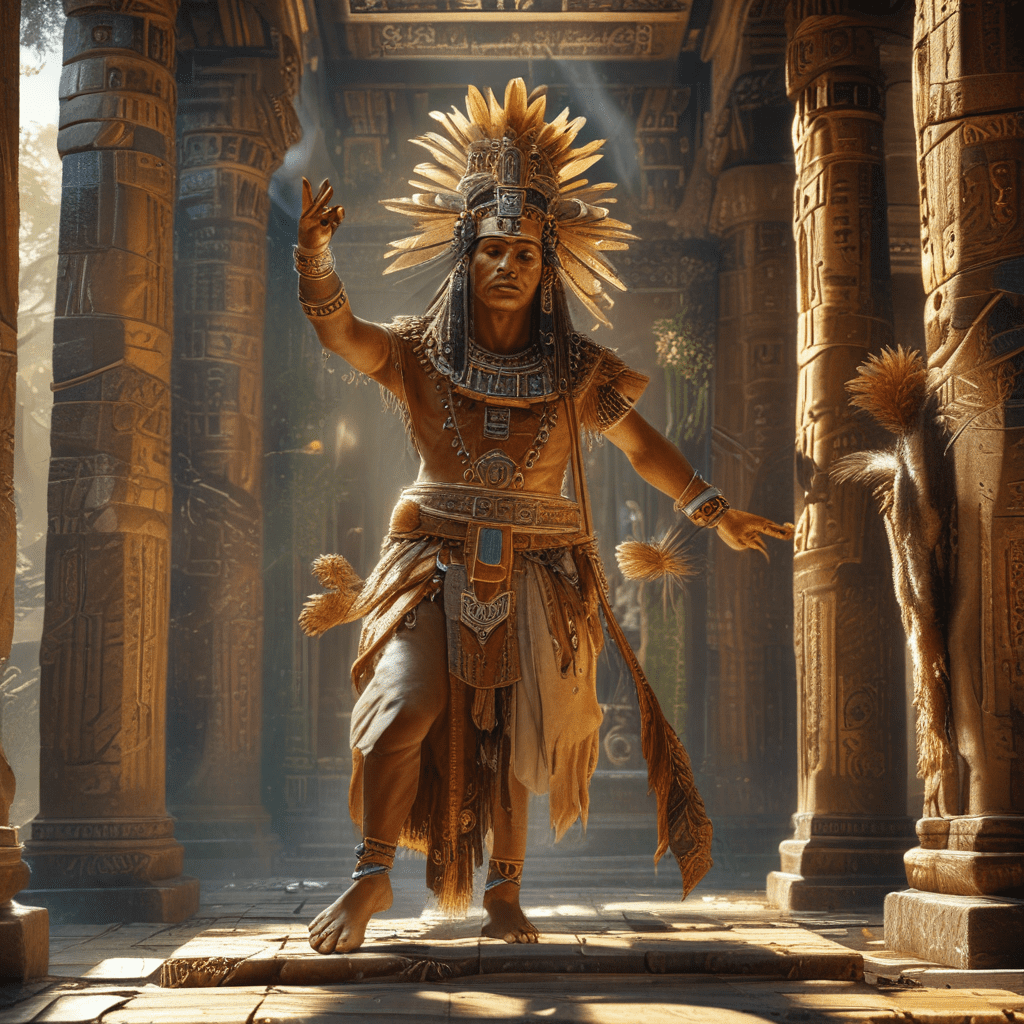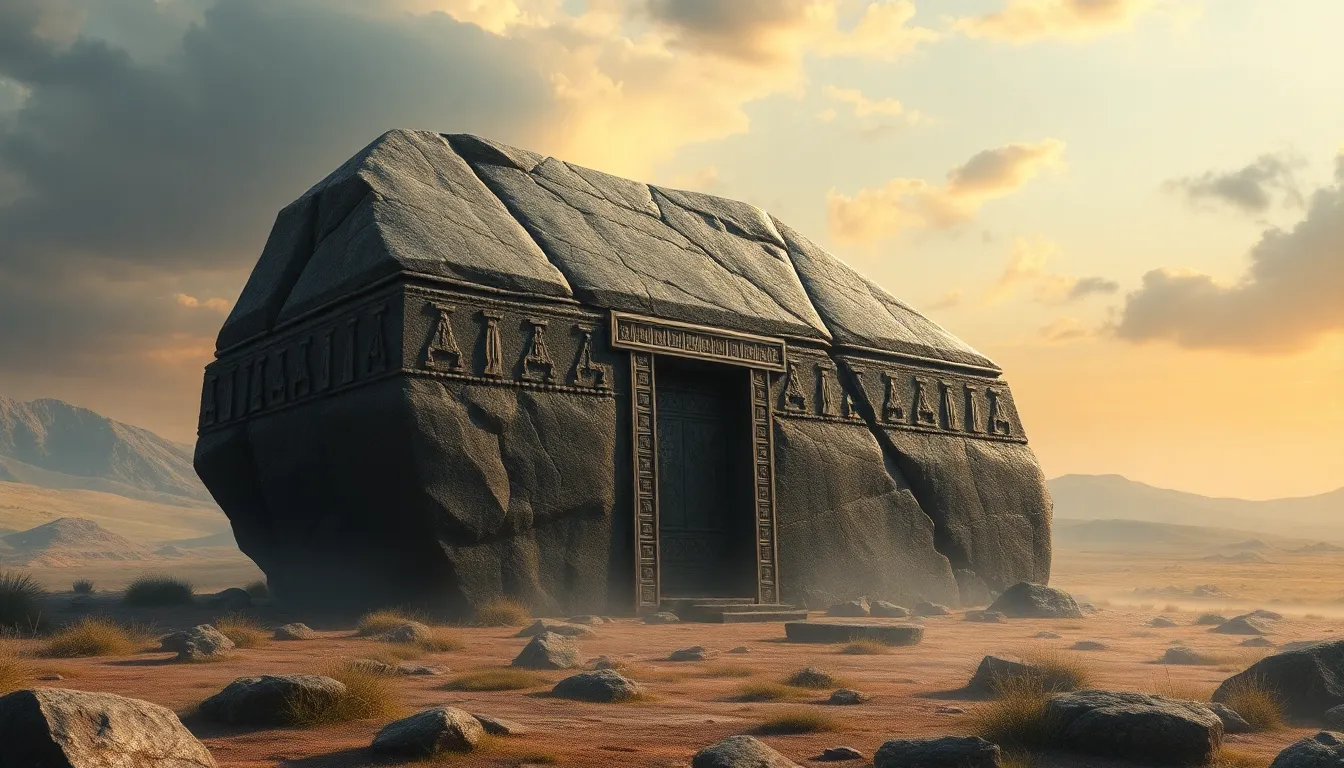The Myth of Wiracocha: Architect of the World in Incan Beliefs
In the heart of the Andes Mountains, where the Incan Empire once thrived, a powerful deity named Wiracocha held a crucial place in their beliefs. More than just a god, Wiracocha was a complex and multifaceted figure, revered as the creator of the world, the divine architect who shaped the cosmos and brought life to the Earth.
Wiracocha’s story is a captivating tapestry woven with elements of creation, destruction, and divine intervention. It embodies the Incan worldview, their understanding of the universe, and their relationship with the natural world.
Wiracocha: Creator God and Divine Architect
The Incan people believed that Wiracocha was the ultimate source of all creation. He was often depicted as a powerful and majestic being, sometimes with a staff and a long white beard, embodying the wisdom and authority of a supreme being.
Wiracocha was not just a creator of the physical world, but also of its inhabitants. He was believed to have brought forth the first humans, shaping them from clay or stone, and bestowing upon them the knowledge and skills necessary to survive. He was the architect of the cosmos, the one who established the order and balance of the universe. The Incas believed that Wiracocha, through his divine will, created the mountains, rivers, and valleys, bringing forth a world teeming with life.
The Origins of the World: Wiracocha’s Role in Cosmogony
The Incan creation myth, as told through the stories of Wiracocha, is a fascinating account of the birth of the world. According to their beliefs, the world was initially a dark and chaotic abyss, a state of nothingness. Wiracocha, emerging from the void, brought forth light and order, shaping the cosmos from the primordial darkness.
Wiracocha's first act was to create the heavens, separating them from the earth. He then created the land, shaping the mountains, valleys, and rivers that would define the landscape of the Incan Empire. This act of creation was not a spontaneous event, but a deliberate and intentional act, demonstrating Wiracocha’s power and control over the universe.
Wiracocha’s Creations: Shaping the Earth, Animals, and Humans
Wiracocha’s creative power extended beyond the physical world. He was believed to be the creator of all living things – the animals, plants, and most importantly, humans. According to Incan mythology, Wiracocha, through his divine word, breathed life into the earth, populating it with diverse animal species and creating fertile landscapes for their sustenance.
The creation of humans, however, was a more complex process. In some versions of the myth, Wiracocha created the first humans from stone or clay, bringing them to life with a breath. Others tell of a more complex process, where Wiracocha, tired of the first humans, destroyed them and created a new generation. These stories highlight the cyclical nature of creation and destruction, a theme pervasive in Incan mythology.
Wiracocha’s Power and Authority: Divine Ruler and Bringer of Civilization
Wiracocha was not just a creator deity; He was also a benevolent ruler, a divine king who guided and protected his creations. He was seen as the ultimate provider, bestowing upon humans the knowledge, skills, and cultural traditions necessary to thrive in the world he had created.
Wiracocha was believed to have taught humans about agriculture, weaving, and pottery, skills that shaped Incan society and fostered its growth. He also established social norms and moral laws, emphasizing the importance of community, respect, and responsibility. These values, instilled by Wiracocha, formed the bedrock of Incan society, guiding their lives and interactions.
Wiracocha’s Mysterious Departure: The Legend of the God Who Vanished
Wiracocha’s presence in the world was not eternal, for the Incas believed that he eventually left the world, his departure shrouded in mystery and legend. Some stories claim that Wiracocha, after shaping the world and its inhabitants, simply vanished, leaving behind a legacy of creation and civilization. Others tell a more dramatic tale, suggesting that Wiracocha, dissatisfied with the behavior of early humans, decided to abandon them to their own devices, leaving the world to face the consequences of their actions.
The exact nature of Wiracocha’s departure remains unknown, leaving the Incas to grapple with questions about his whereabouts and his future involvement in their lives. Despite his absence, Wiracocha continued to hold a significant place in Incan beliefs, for they believed that he remained a powerful presence, watching over them from the heavens and shaping the destinies of the world.
Wiracocha in Incan Rituals and Ceremonies: Reverence and Sacrifice
Incan rituals and ceremonies played a crucial role in connecting the people with the divine, particularly with Wiracocha. They believed that through these sacred acts, they could appease and honor the creator god, ensuring his favor and protection.
Temples, built in honor of Wiracocha, were centers of religious activity and pilgrimages. These monumental structures were adorned with intricate carvings and artwork that depicted the creator god’s power and majesty. Inside these temples, priests performed elaborate rituals, offering sacrifices of animals, precious metals, and even human lives to appease Wiracocha and seek his blessings.
The central role of Wiracocha in Incan religion was evident in the widespread practice of pilgrimage, where people traveled long distances to visit temples dedicated to the creator god. These pilgrimages were seen as a journey of devotion, a way to connect with Wiracocha and seek his favor. Offerings, both material and symbolic, were presented to the deity, as a testament to their faith and a means of securing his protection.
Wiracocha’s Influence on Incan Society: Moral and Social Order
Wiracocha’s influence extended beyond the realm of the spiritual, shaping every aspect of Incan society. The principles of order, harmony, and responsibility, instilled by Wiracocha, served as a foundation for the Incan way of life.
The Incas believed that their social structure, with its emphasis on hierarchy and obedience, was a reflection of Wiracocha’s divine order. The emperor, considered to be the supreme ruler, was believed to be a descendant of the creator god, inheriting his authority and responsibility to maintain harmony within the empire.
The Incan belief in Wiracocha also shaped their moral code. Acts of kindness, compassion, and respect for others were seen as ways to honor the creator god and maintain his favor. Conversely, acts of selfishness, greed, and disrespect were seen as offenses against Wiracocha, potentially incurring his wrath.
Theories on the Origins of Wiracocha: Ancient Incan Mythology vs. Later Influences
The exact origins of the Wiracocha myth remain a subject of debate among scholars and historians. Some theories suggest that the figure of Wiracocha originated in ancient Incan mythology, existing long before the rise of the empire. Others argue that the myth of Wiracocha was influenced by contact with other cultures, particularly the Chibcha people of present-day Colombia, who worshiped a creator god known as Chibchacum.
The debate surrounding the origins of Wiracocha highlights the complexity and dynamic nature of Incan beliefs. While the myth itself is undeniably Incan, its specific elements and interpretations may have been influenced by interactions with other cultures, contributing to the rich tapestry of Andean mythology.
Wiracocha: A Reflection of Incan Values and Beliefs
The myth of Wiracocha stands as a testament to the Incan worldview, reflecting their understanding of the universe, their relationship with the natural world, and their own place within the cosmos.
Wiracocha, as the architect of the world and the ultimate source of creation, embodies the Incan belief in a powerful and benevolent deity who governs the universe with divine wisdom and authority. His role as the bringer of civilization highlights their respect for order, harmony, and the importance of community.
The myth of Wiracocha also reflects the Incan understanding of the cyclical nature of creation and destruction, the interplay between chaos and order. It speaks to their deep connection with the natural world, their reverence for the mountains, valleys, and rivers that shaped their lives.
Wiracocha’s Enduring Legacy: A Powerful Figure in Andean Mythology
Despite the collapse of the Incan empire, the myth of Wiracocha has endured, continuing to hold a significant place in Andean mythology and folklore. The figure of the creator god, with his power, wisdom, and benevolence, continues to resonate with the descendants of the Incan people, serving as a reminder of their rich cultural heritage and their profound connection to the Andes mountains.
Even today, the myth of Wiracocha serves as a source of inspiration, offering a framework for understanding the universe, the natural world, and the human condition. Through the stories of Wiracocha, the Incan people left behind a legacy of creation, civilization, and a profound belief in the divine, a legacy that continues to inspire and captivate generations.
FAQ
Q: Was Wiracocha the only god worshipped by the Incas?
A: No, Wiracocha was one of many deities worshipped by the Incas. Other important gods included Inti (the sun god), Mama Killa (the moon goddess), Pachamama (the earth goddess), and Viracocha's son, Kon-Tiki Viracocha.
Q: Is the myth of Wiracocha a creation myth?
A: Yes, the myth of Wiracocha is a creation myth, explaining the origin of the world, its people, and its inhabitants.
Q: Was Wiracocha a benevolent god?
A: While Wiracocha is generally depicted as a benevolent creator god, some stories suggest that he was not always pleased with the actions of humans and punished them for their misdeeds.
Q: Why did Wiracocha leave the world?
A: The reasons behind Wiracocha's departure from the world are unclear and vary depending on the version of the myth.
Q: What is the significance of Wiracocha's departure for Incan beliefs?
A: Wiracocha's departure is a reminder of his immense power and the uncertainty of the future. It suggests that the world is subject to divine intervention and that even the creator god is not always present.



